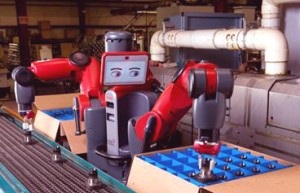
News
Are traditional supply chain logistics models coming to an end?
19/5/2015
Supply chain logistics management used to be simple compared to what it is today. Prior to the 80’s, manufacturers sold to wholesalers or directly to retailers. Salespeople called on their supply chain customers and wrote orders. Retailers called in their orders or sent them by mail. However, this low-tech supply chain started to die out and was almost extinct by the mid-1990s.
George Prest, CEO of Materials Handling Institute (MHI), believes the same thing will happen to traditional supply chain logistics models.
“When 2025 rolls around, traditional supply chain models will be extinct, according to the 100-plus thought leaders and partners behind the U.S. Roadmap for Material Handling & Logistics.”
Is this something to be believed or should it just be disregarded? Here are some of the factors believed to prompt the soon extinction of traditional supply chain logistics models:
- E-commerce and omni-channel distribution
- Mobile and wearable technology
- Sensors and the Internet of things
- Robotics and automation
- Big Data
- Total supply chain visibility and collaboration
Factors influencing the coming extinction of traditional supply chain logistics models
The supply chain industry is continually evolving. It has transformed from a simple seller-customer relationship into a complex ecosystem of people, processes and technologies.
Below is some of the different factors believed to drive the next phase of supply chain logistics transformation. Read how it will make a decisive impact to the future of supply
chain industry.
E-commerce and omni-channel distribution
An omni-channel is a multichannel approach to sales that seeks to provide the customer with a seamless shopping experience whether the customer is shopping online from a desktop or mobile device, by telephone or in a bricks and mortar store. The increasing trend in mobile device and desktop e-commerce users is driving retailers to seek omni-channel distribution center providers to better meet consumer demand. This has prompted supply chain logistics professionals to think of better ways on how they could consolidate multiple facilities into one location to create these omni-channel distribution centers.
Read our previous article to learn how e-commerce is slowly transforming retail logistics.
Mobile and wearable technology
Brien McDonald of National Australia and Bank Group (NAB) share the following information regarding the online retail sales index for Australia this March. It reveals online sales growth in March, 2015 (one month) was 0.8% and is expected to bring a continuous decline in traditional retail sales.
“In dollar terms, we estimate Australians spent $16.8 billion on online retail in the 12 months to March 2015. This level is equivalent to 6.9% of spending at traditional bricks & mortar retailers as measured by the ABS (excluding cafés, restaurants and takeaway food, to create a like-for-like comparison) in the 12 months to February 2015.”
With more customers shopping and tracking purchases using their smartphones and wearable technology, adoption will continue and e-commerce can be expected to grow at an even greater rate. It would be expected that the supply chain industry implement these rapidly adopted technologies to bring more efficiencies to logistics.
Learn how BRi’s direct-to-store services can enhance your deliveries.
Sensors and the Internet of things
Back in the year 2000, industry experts has already predicted the big role of internet and other emerging technologies to the transformation of the supply chain industry. In a survey of 181 executives, it was revealed that the following processes are already relying on internet applications and sensors:
- Transportation (56.2%)
- Order processing (50.7%)
- Purchasing/procurement (45.2%)
- Customer service (42.5%)
- Vendor relations (45.2%)
- Inventory management (30.1%)
- Production scheduling (12.3%)
With the radio-frequency identification (RFID) and global positioning systems (GPS) being the norm in warehouse and logistics management, embedded sensors that communicate in real time through the Internet without human intervention is forcing logistics to work out ways to leverage of these advancements and provide greater efficiencies or new processes.
Robotics and automation
The supply chain industry is closely resembling the Jetsons, especially with unmanned ships, drones delivering pizza and robots picking warehouse items now seen as a coming reality.
Robotics and automation removes potential human error. It saves humans from having to perform tedious and dangerous tasks. Moreover, it is an important catalyst for the revolutionary change the supply chain industry will very soon face.
Big Data
Data warehouses are now being harnessed by retailers to:
- Deliver a level of customised service aimed to improve customer experience
- Better predict, analyse and visualise marketing sales and operations
- Mitigate risks and prepare for future scenarios
The growing availability of this new type of information will push logistics supply chain to further extend their systems and integrate and deliver new capabilities. Read how BRi maximises big data to your advantage.
Total supply chain visibility and collaboration
Collaboration, Planning, Forecasting and Replenishment (CPFR) is an inventory management system used for sharing information among channel members. It is an important aspect of the supply chain industry as it allows complete visibility.
The retailer sends information to a manufacturer who uses the data to construct a computer-generated replenishment forecast. The forecast is shared with the retailer before it is executed. As a result, the retailer is given supply chain information that can be then shared with the logistics partner. This allows total collaboration.
Read how BRi assists businesses in properly implementing cost effective CPFR systems.
Back to News PageNews Archives
How Can We Help
[ Please select ]
Contact Us
Like our Site
Share our site
Tweet
Subscribe to Newsletter
- Contact Us
-
 Sydney (Head Office)
Sydney (Head Office)
Suite 1, Level 8
43 Bridge Street
Hurstville NSW 2220 -
 1300 348 828
1300 348 828
-
 02 9738 3800
02 9738 3800
-
 02 97710711
02 97710711
-
 sales@brint.com.au
sales@brint.com.au
Copyright © 2023 BR International Logistics Pty Ltd.
All rights reserved.
All rights reserved.
Digital Service by Vixen Internet Solutions 








